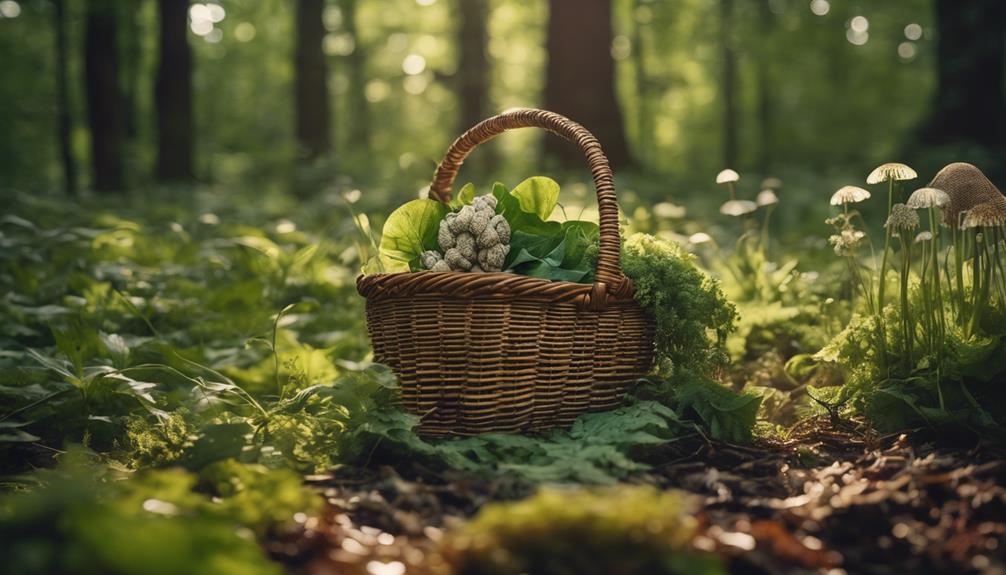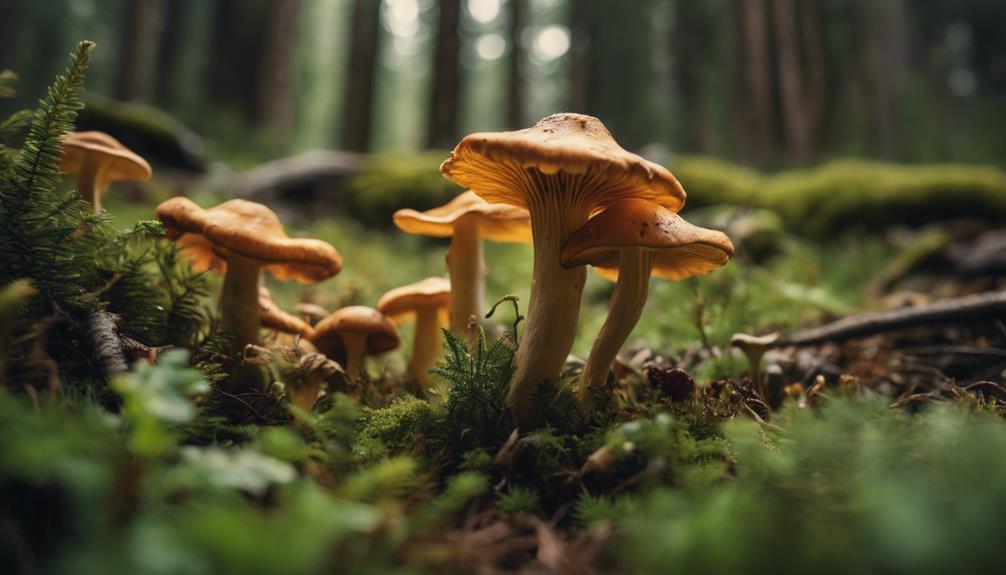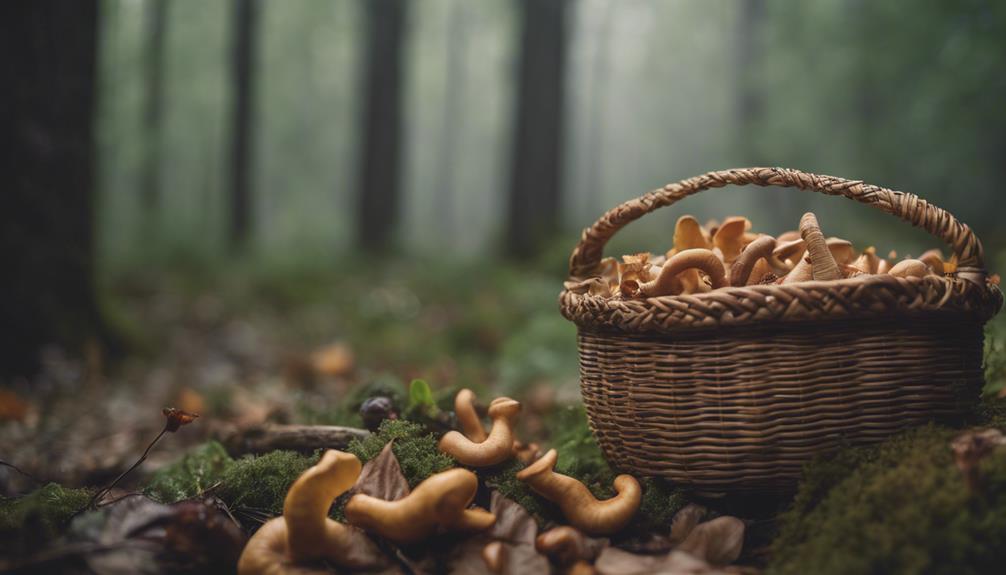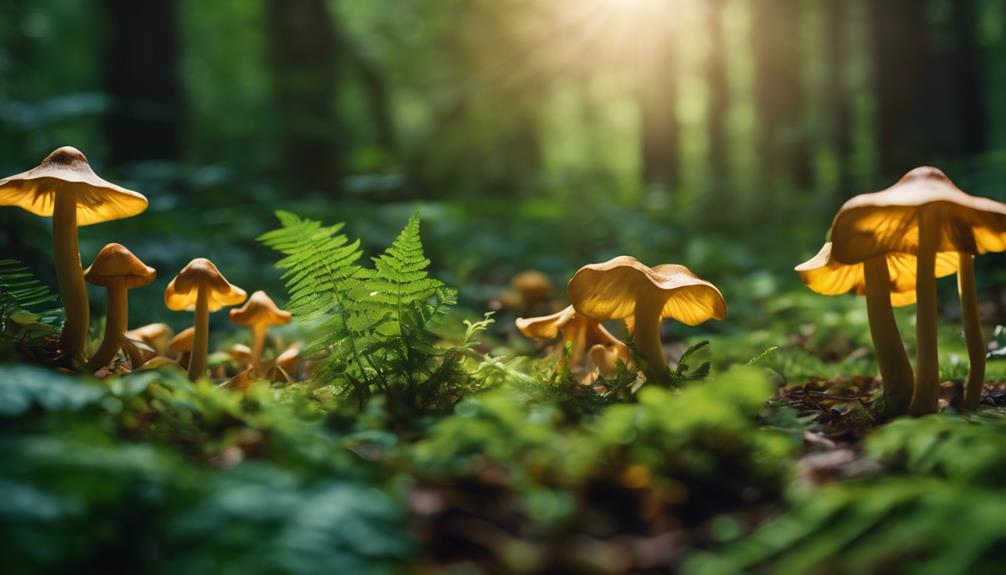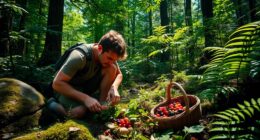You're about to uncover a treasure trove of wild edibles in Virginia's wilderness, where every season offers a unique bounty of tree nuts, fruits, greens, and medicinal herbs waiting to be discovered and devoured. From ramps and violets in spring, to blackberries and elderberries in summer, and wild greens in autumn, each season brings new flavors and nutrients. Prioritize safe identification and harvesting practices to guarantee a bountiful harvest. As you explore Virginia's wild edibles, you'll embark on a culinary adventure with flavors like hickory nuts, persimmons, and more, and learn the secrets to preserving your wild harvest for winter enjoyment. In addition to Virginia, nearby regions offer similar opportunities for those keen on exploring the natural bounty. Delaware wild edibles foraging presents its own set of unique treasures, such as pawpaws, wild asparagus, and beach plums, awaiting discovery in forests, meadows, and shorelines alike. By expanding your foraging to different areas, you’ll not only diversify your diet but deepen your connection to the land and its seasonal wonders.
Key Takeaways
- Forage in Virginia's wilderness to discover a variety of tree nuts, fruits, greens, and medicinal herbs available throughout the year.
- Prioritize safe identification and harvesting to ensure correct edibility and sustainability.
- Seasonal foraging in Virginia offers unique flavors and nutritional profiles, from spring ramps to autumn wild greens.
- Preserve your wild harvest through drying, syrup-making, and proper storage to enjoy year-round.
- Responsible foraging connects you with nature and provides free, nutritious ingredients for a culinary adventure.
Exploring Virginia's Wild Edibles
As you venture into Virginia's wilderness, you'll discover a treasure trove of wild edibles waiting to be uncovered, from the sweet, nutty flavor of hickory nuts to the tangy zip of autumn persimmons. Autumn in Virginia is the perfect time for foraging, with an abundance of tree nuts, late fruits, and medicinal herbs ripe for the picking.
You'll find that wild foraging in Virginia provides an opportunity to connect with nature and uncover free, nutritious ingredients rich in flavors and textures. As you wander through the woods, you'll stumble upon an array of wild edibles, each with its unique characteristics and uses. From the earthy sweetness of Jerusalem artichokes to the tartness of rosehips, every find is a culinary adventure waiting to happen.
Identifying Wild Delicacies Safely

Now that you're excited to start foraging, it's essential to prioritize safety above all else.
You'll need to know your plants inside and out, so take the time to study their key features, like leaf shape and flower color, to make sure you're picking the right ones.
Know Your Plants
When foraging for wild edibles in Virginia's Blue Ridge region, you must develop a keen eye for detail to accurately identify the plants you plan to eat. It's important to recognize the distinguishing features of wild greens, such as leaf shape and flower color, to differentiate between edible and toxic plants.
For instance, violets, dandelions, and chickweed are all wild edibles that can be found in the region, but they require careful identification to guarantee safe consumption.
When foraging for wild edibles, it's vital to understand the characteristics of each plant. Take the time to study the shape and color of leaves, flowers, and stems. Research the habitats and growth patterns of different plants to increase your chances of finding the ones you're looking for.
Learning to recognize and harvest wild plants won't only enhance your foraging experiences but also guarantee a bountiful harvest of delicious edibles. By developing your plant identification skills, you'll be able to enjoy the rich flavors and textures of Virginia's wild harvest, from hickory nuts to persimmons and Jerusalem artichokes.
Be Absolutely Certain
You've learned to recognize the distinguishing features of wild greens, but it's equally important to understand that absolute certainty is necessary when identifying wild delicacies to guarantee safe consumption.
When it comes to foraging, there's no room for doubt. Properly identifying wild edibles is vital for safe foraging and consumption. A single misstep can have serious consequences, which is why it's vital to be absolutely certain of the edibility of wild plants.
To guarantee foraging safety, utilize field guides, expert advice, and online resources to accurately identify wild delicacies. Take note of distinct features like leaf shape, flower color, and growth patterns to identify plants confidently.
If you're unsure, consult with experienced foragers or local experts to confirm the edibility of wild plants. Remember, it's always better to err on the side of caution when it comes to foraging for wild edibles. By being absolutely certain, you can enjoy the bounty of Virginia's wild harvest while ensuring your safety.
Spring Foraging in Virginia's Woods

As you wander through Virginia's woods in the spring, the forest floor transforms into a treasure trove of wild edibles, ripe for the picking. This season, Virginia's natural environment offers a bounty of delicious and nutritious wild edibles, perfect for foraging for food.
By embracing the art of foraging, you'll not only discover new flavors but also reap the health benefits of incorporating wild edibles into your diet.
Here are three wild edibles to look out for in Virginia's woods this spring:
- Ramps: A popular spring delicacy, ramps can be found in Appalachian regions of Virginia. Add them to your favorite dishes for a burst of flavor.
- Chickweed: With its star-like flowers, chickweed is a nutritious and versatile wild plant perfect for salads, soups, and more.
- Violets: Known for their vibrant purple flowers, violets can be used in salads, teas, and desserts, adding a touch of sweetness and color to your creations.
As you explore Virginia's woods, remember to forage responsibly, respecting the natural environment and ensuring the sustainability of these wild edibles for generations to come. Happy foraging!
Summer Harvest of Wild Fruits

As you venture out into Virginia's summer landscape, you'll find an abundance of wild fruits ripe for the picking.
From juicy blackberries to tart raspberries, these sweet treats aren't only delicious but also packed with nutrients.
This summer, get ready to indulge in the ripened berry delights that Virginia's wild harvest has to offer.
Ripened Berry Delights
What's sweeter than biting into a ripe, juicy berry on a warm summer day in Virginia, where the peak season for harvesting wild fruits is in full swing? Summer is the perfect time to forage for delicious and nutritious wild berries like blackberries, raspberries, and elderberries.
These fruits aren't only a treat to your taste buds, but they're also packed with antioxidants, vitamins, and minerals that offer numerous health benefits.
Here are three wild berries you shouldn't miss:
- Blackberries: Known for their sweet-tart flavor, blackberries are perfect for snacking, baking, or adding to your favorite recipes.
- Raspberries: Delicate and flavorful, raspberries are great for fresh consumption or adding to desserts and smoothies.
- Elderberries: Prized for their immune-boosting properties, elderberries are commonly used in syrups, teas, and baked goods.
As you venture out to forage for these wild berries, remember to always identify them correctly and harvest them sustainably in order to secure a bountiful supply for years to come.
Happy foraging!
Summer Fruit Abundance
You're in for a treat when summer arrives in Virginia, as the season brings a cornucopia of wild fruits ripe for the picking, from juicy blackberries and raspberries to sweet blueberries and tangy elderberries.
As you forage through Virginia's forests and open fields, you'll discover an abundance of wild fruits, each bursting with flavor and nutrients. Elderberries, high in vitamin C, are a summer highlight, while rose hips, packed with antioxidants, are another prized find.
Important to note, when foraging for wild fruits, correctly identifying the fruits is crucial to ensure a safe and enjoyable harvest.
Summer fruit foraging provides an opportunity to connect with nature and enjoy fresh, seasonal flavors. Harvesting wild fruits in summer can lead to delicious jams, pies, and preserves for enjoyment throughout the year.
Autumn's Bounty of Wild Greens

With the autumn leaves comes a kaleidoscope of wild greens, beckoning foragers to explore Virginia's countryside and uncover the season's hidden treasures. As you venture out, you'll discover a diverse array of wild edibles, each with its unique flavor and nutritional profile.
Here are just a few examples of the wild greens you can forage in autumn:
- Violets: Rich in vitamins A and C, violets add a delicate flavor to salads and teas.
- Dandelions: With their bitter taste, dandelion greens are perfect for balancing the flavors in pesto and other dishes.
- Garlic Mustard: This invasive species is a great addition to salads, soups, and sauces, offering a pungent flavor.
As you forage, remember to prioritize sustainable harvesting techniques and proper identification to ensure a safe and enjoyable experience.
Autumn's bounty of wild greens is a treasure trove of flavors and nutrients, waiting to be uncovered in Virginia's wild harvest.
Preserving Wild Harvest for Winter

As the last autumn leaves fall, preserving the wild harvest for winter becomes essential, ensuring that the flavors and nutrients of Virginia's countryside remain accessible even when fresh foraging opportunities dwindle.
You can preserve wild fruits like persimmons and rosehips by drying them, and nuts like hickory and chinquapins can be dried as well. Create syrups, teas, or jams with foraged ingredients to enjoy the flavors of autumn throughout the winter months.
Properly store dried wild edibles in airtight containers to maintain freshness and nutritional value. You can also incorporate foraged roots like Jerusalem artichokes into hearty winter soups and stews for added nutrition and flavor.
Frequently Asked Questions
What Edible Plants Are Native to Virginia?
You'll find that Virginia is home to many native edible plants, including ramps, pawpaws, persimmons, and sassafras, which can add unique flavors to your dishes, and you can forage for them in the state's diverse landscape.
Is Foraging Illegal in Virginia?
Did you know that 85% of Virginians live within a 10-minute walk of a foraging spot? Fortunately, you can rest easy – foraging for personal use is legal in Virginia, but be sure to check local regulations and respect private property!
What Herbs Grow in the Wild in Virginia?
You'll find garlic mustard, ramps, and pineapple weed growing wild in Virginia's forests and fields, offering unique flavors and nutritional benefits for your culinary creations.
How Do You Forage Wild Edibles?
When you forage wild edibles, start by researching which plants are in season and where to find them, like chanterelle mushrooms in oak forests. You'll need to identify them correctly, using field guides and expert guidance to avoid toxic lookalikes.
Conclusion
As you wander through Virginia's woods, wild wonders await. Forage for flavors that flourish in the forest, from spring's sweet wild onions to autumn's abundance of leafy greens.
Savor summer's succulent fruits and preserve the harvest for winter's warmth. With every step, discover a world of wild delicacies, ripe for the picking.
Virginia's wild harvest is yours to uncover, a treasure trove of tasty treats waiting to be unearthed.

